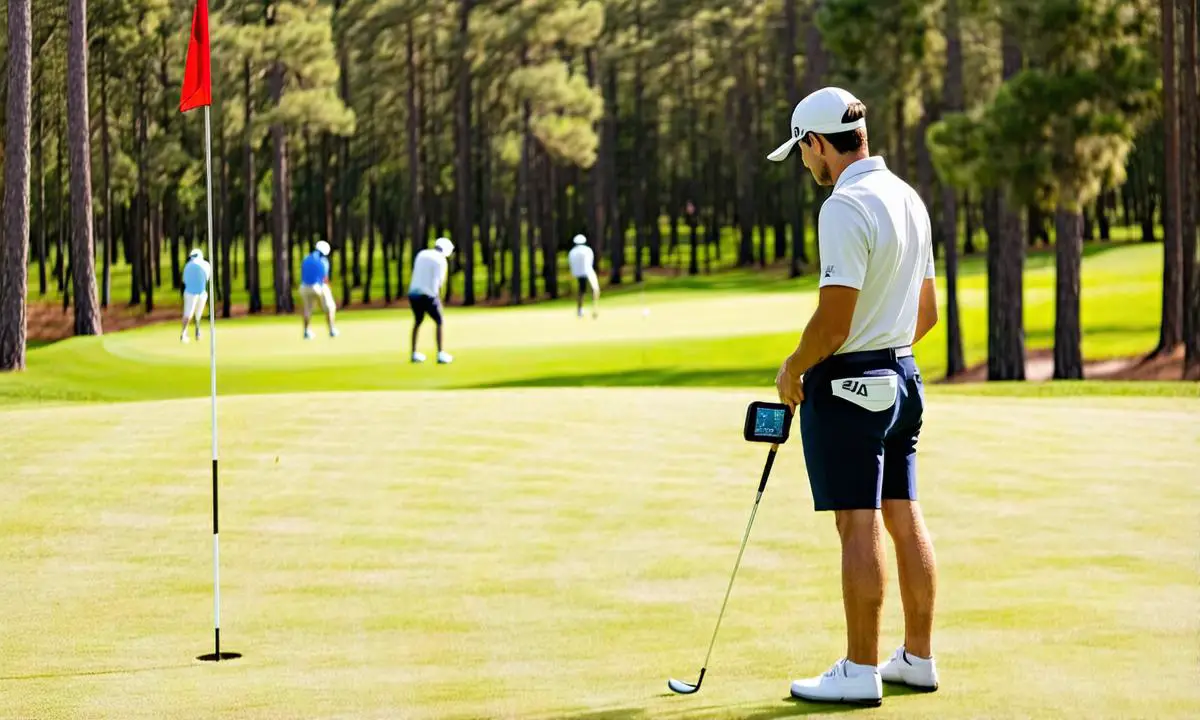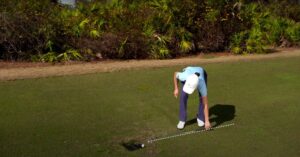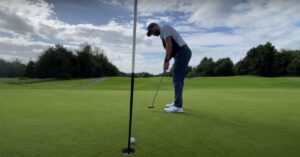What Is A Par 3 Golf Course? 5 Key Benefits for Players
Golf enthusiasts often talk about different types of courses, but what truly makes a par 3 golf course unique? These shorter layouts offer a distinctive challenge that appeals to players of all skill levels. If you seek an enjoyable round without the time commitment of a full-length course, this might be your answer.
A par 3 golf course features holes measuring less than 200 yards, designed specifically for shorter tee shots resulting in fewer strokes on each hole. These courses typically focus on precision rather than distance, making them ideal for both beginners and experienced golfers looking to sharpen their skills.
Curious about what benefits come with playing par 3s? From improving your short game to enjoying a more relaxed atmosphere, these courses hold plenty of surprises. Stay tuned as we dive deeper into why they are beloved by many in the golfing community.
What Defines a Par 3 Golf Course and Its Rules?
A par 3 golf course stands out in the golfing world due to its unique design focused on shorter holes. Instead of traditional layouts with multiple par types, these courses consist exclusively of holes that are categorized as par 3s, each measuring less than 200 yards.
The essence of a par 3 golf course lies in its simplicity and accessibility. Players can expect to use just one club for most shots—typically an iron or wedge—to navigate these short yet challenging holes. This feature makes it perfect for sharpening your skills without the stressors often associated with longer courses.
Each hole’s distance varies but typically ranges from about 100 to 200 yards. Here, players must rely on their precision rather than sheer power. Many seasoned golfers enjoy visiting par 3 courses simply to practice their approach shots and putting game.
Understanding the Basic Rules
While the rules of golf apply universally, some specific guidelines pertain particularly to par 3 courses:
- Teeing Grounds: Ensure you know where you should tee off. Most par 3 courses feature multiple tee boxes catering to different skill levels.
- Pacing Play: Since rounds take less time here compared to full-length courses, maintaining pace is crucial. Being mindful ensures everyone enjoys a timely round.
- No Mulligans: Just like at any other course, adhere strictly to rules about taking extra strokes unless agreed upon among friends or casual play.
If you’re new to golf or just looking for a relaxed day outdoors with friends or family, consider visiting your nearest par 3 golf course. You will likely find them welcoming and accommodating!
5 Essential Tips for Playing on Par 3 Courses Successfully
Whether you’re new to golf or a seasoned player, mastering the nuances of a par 3 course can enhance your overall game. Here are five essential tips to help you navigate these shorter yet challenging layouts effectively.
1. Choose the Right Club Wisely
Selecting the correct club is vital when playing a par 3 hole, as distances often range from 100 to 200 yards. A good rule of thumb is to choose a club that will allow you to hit with confidence, aiming for accuracy over power.
If you typically hit an iron between 140 and 160 yards, consider using that iron on holes measuring around the same distance. However, factor in wind and elevation changes when choosing your club. Adjusting your choice based on these conditions can significantly improve your performance on each hole.
2. Focus on Your Short Game
A par 3 course emphasizes precision and short-game skills more than long drives. Spend extra time practicing chipping and putting before your round. This focus pays off because many strokes lost come from missed putts or poorly executed approaches.
Consider setting up drills at home or during practice sessions dedicated solely to improving these areas. For instance, create various distances from the hole and challenge yourself by making consecutive putts before moving further away.
3. Master Your Mental Approach
Mental preparedness plays a crucial role in any golfer’s success—especially in short-format games like those found on par 3 courses. As you approach each tee box, visualize both successful shots and how you’d like to play out each hole based on its layout.
This mental rehearsal helps set realistic expectations while minimizing anxiety over performance pressure since every player makes mistakes occasionally!
Tuning into Course Management Strategies
- Simplify Choices: When faced with tricky pin placements (e.g., tucked behind bunkers), select safer landing zones instead of going directly for flags that could land you in trouble.
- Pace Yourself: Maintain calmness throughout multiple rounds; getting frustrated can lead only toward poor decisions when shot timing becomes less critical due simply needing some fresh air!
4. Understand Wind Dynamics
The wind influences every golfer’s shot trajectory but especially affects shorter holes where precise adjustments matter most! Observe weather patterns in advance whenever possible: heads-up winds may require one additional club length while tail-end winds might mean hitting it just right without much effort needed thereafter!
Additionally, note whether gusts tend towards consistent directions since this knowledge enhances decision-making skills under varying circumstances as well!
A Quick Summary Table of Weather Influences:
| Wind Direction | Impact on Shots | Club Adjustment Needed? |
|---|---|---|
| Headwind (face-on) | Increases distance needed for ball reach; | Yes (+1 club) |
| Tailwind (behind) | Decreases distance needed for ball reach; | No |
How to Choose the Right Equipment for Par 3 Challenges?

Choosing the right equipment when playing on par 3 courses can significantly impact your overall performance. With shorter distances and fewer clubs needed, it’s essential to understand how specific choices enhance your game.
The primary goal on a par 3 course is precision, so let’s focus on selecting the best tools for the job.
Selecting Optimal Clubs
Your choice of club can make or break a shot in this compact format. Typically, you’ll want to carry a selection that covers various yardages:
- Short Irons (8-9 iron): Best for holes ranging from 100 to 150 yards.
- Pitches (Pitching Wedge/Lob Wedge): Useful around greens where accuracy is crucial.
- Utility Woods: Handy for longer holes but often not necessary given their distance limitations.
I recommend carrying at least three key clubs: one short iron, one mid-iron, and a wedge. This range gives flexibility while still focusing on accuracy over distance.
The Importance of Golf Balls
The right golf ball can also elevate your game. On par 3s, choosing something with good control helps improve your short game:
- Softer Compression Balls: These provide better feel around the greens and help with spin control when chipping or putting.
- Average Distance Balls: If you’re confident about hitting straight shots consistently, these can give some added distance without sacrificing control too much.
I’ve noticed that certain players excel by matching their ball type with their swing speed; doing so can lead to more consistent results during play.
Additions That Make a Difference
Certain accessories might change how you approach each hole as well:
- Tee Height Adjustments: Aiming lower tee heights allows consistent launch angles especially helpful when dealing with windy conditions common at many courses!
- Putter Choice: Invest in a putter tailored toward comfort since you’ll be taking plenty of short strokes here—find out what feels best in hand!
“A golfer’s success relies heavily on adapting club selections based not only upon distance per hole but prevailing weather factors.” – John Smith, PGA Professional
| Equipment Type | Recommended Use | Key Benefit |
|---|---|---|
| Short Iron/Pitching Wedge | Approach Shots / Chipping Around Greens | Enhanced Control & Spin Accuracy |
| Mid-Iron (7-6) | Longer Approach Shots / Some Tee Offs | Versatile Usage Across Distances |
FAQs
Can beginners play well on a par 3 golf course?
Absolutely! Par 3 courses are beginner-friendly, focusing on shorter holes. They provide an excellent opportunity for new golfers to develop their skills without the pressure of longer distances.
How long does it take to play a par 3 course?
A standard round on a par 3 course typically takes about two hours. This quick pace allows players to enjoy more rounds in less time, making it perfect for busy schedules.
What should I focus on while playing par 3s?
Your main focus should be precision and short-game skills. Practice chipping and putting regularly, as these areas greatly impact your score when playing shorter holes.



![What Is A Bogey In Golf? [Explained] What-Is-A-Bogey-In-Golf](https://giftedgolfers.com/wp-content/uploads/2023/01/What-Is-A-Bogey-In-Golf-300x157.jpg)

![What Is A Birdie In Golf? [Explained] What-Is-A-Birdie-In-Golf](https://giftedgolfers.com/wp-content/uploads/2023/01/What-Is-A-Birdie-In-Golf-300x157.jpg)
